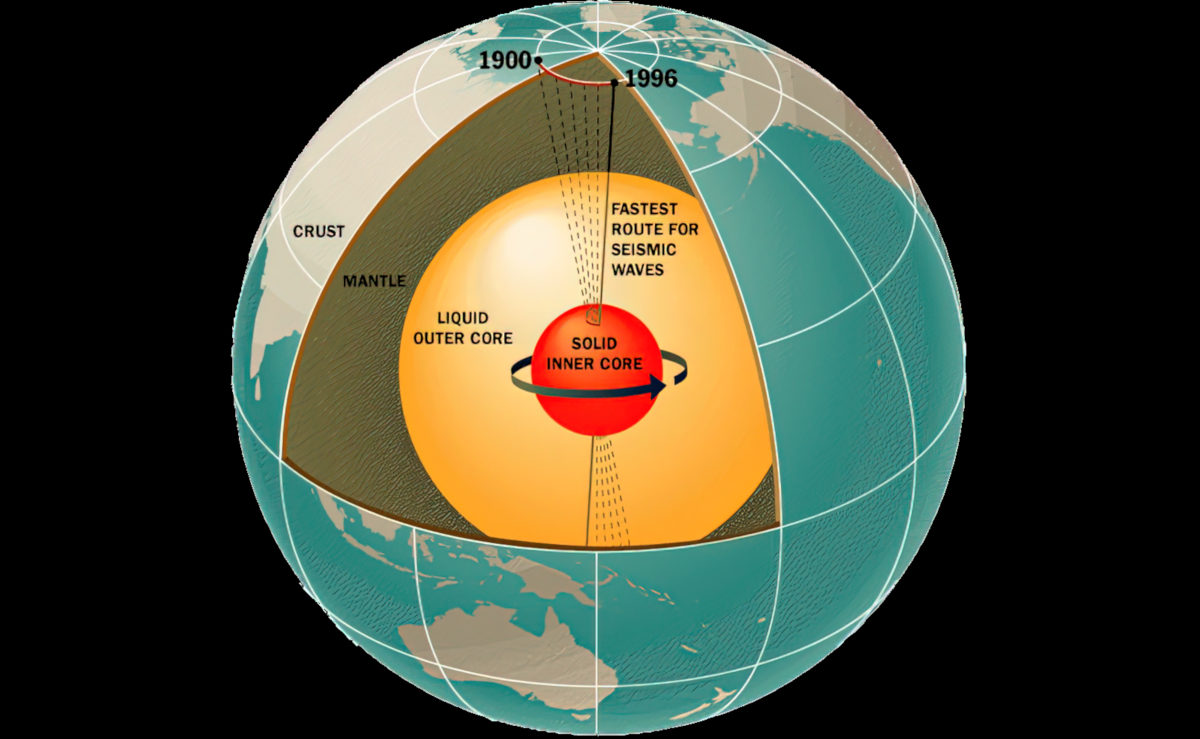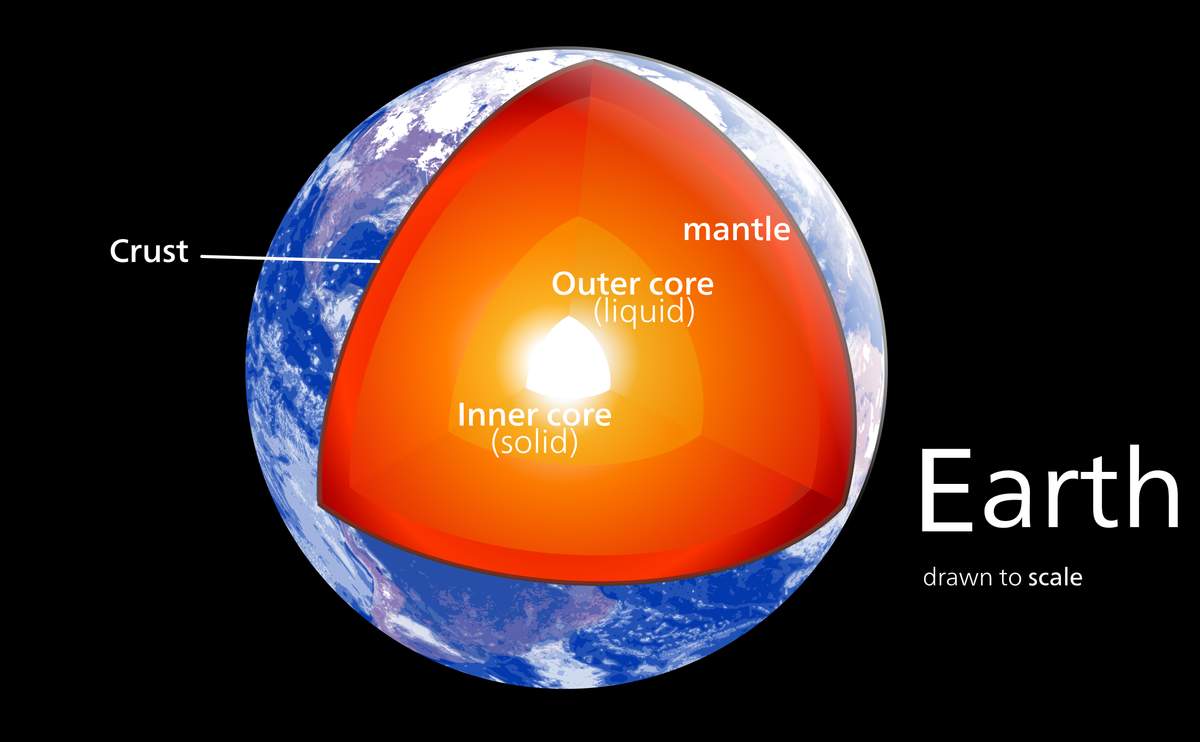Scientists have learned more about the inner workings of the Earth by studying the way waves from earthquakes travel through the planet’s center. The results suggest that the Earth’s inner core may be starting to spin more slowly than the Earth.
The Earth is made up of several layers. The thin, outer layer is called the crust. Below the crust is the mantle, which makes up about 84% of the Earth. Below the mantle is the Earth’s core.
The Earth’s core has two parts: the outer core and the inner core. Both of these are made mainly of the metals iron and nickel. The outer core is liquid. But the inner core is a solid ball held in this liquid almost like the yolk in an egg.
😕
This image has not been loaded because of your cookie choices. To view the content, you can accept 'Non-necessary' cookies.
The Earth is made up of several layers. The thin, outer layer is called the crust. Below the crust is the mantle. Below the mantle is the Earth’s core, which has a liquid outer core and a solid inner core. Scientists long suspected that the inner core might spin at a different rate than the Earth.
Scientists suspected for a long time that the inner core might be spinning slightly differently from the way the Earth spins.
In the 1990s, two scientists, Paul Richards and Xiaodong Song, studied the inner core by looking at “seismic waves” – vibrations from earthquakes – that travel through the center of the Earth. They focused on groups and pairs of waves from earthquakes that naturally repeat.
If the inner core was spinning exactly with the Earth, each wave of the pair should have taken the same time to pass through the Earth. Instead, some moved faster than others. This was because they were hitting different parts of the inner core as it spun.
Their studies revealed that the inner core was spinning in the same direction as the Earth, but slightly faster.

(Source: Dr. Tony Phillips/NASA [Public domain], via Wikimedia Commons.)
Now Dr. Song and Yi Yang – another scientist who studies the Earth – say they’ve used the same method to learn that the Earth’s inner core may be starting to spin slower than the Earth.
The scientists say that before 2009, the wave pairs showed that the inner core was spinning faster than the Earth.
Around 2009, that seemed to change. The timing of the wave pairs was no longer different. The researchers believe that the inner core had started spinning at the same speed as the Earth.
Recently, the wave pairs have begun to travel through the Earth at different rates of speed once more. Dr. Song and Dr. Yang say that this suggests that the inner core is now starting to spin more slowly than the Earth.

(Source: Kelvinsong [CC BY-SA 3.0], via Wikimedia Commons.)
The movement of Earth’s inner core is controlled by two main forces. One is the Earth’s magnetic field, which is created by the movement of the liquid in the outer core. The other force is gravity from the Earth’s mantle.
The scientists say that if these two forces don’t balance each other, the inner core may go faster or slower.
The researchers studied earthquake wave pairs from Alaska, going all the way back to 1964. They noticed that the inner core’s spin also seemed to change speed in the early 1970s.
The scientists say that the inner core may have a pattern of speeding up and slowing down every 70 years or so.
Not everyone agrees. Many scientists who study the Earth say more information is needed to figure out what is really going on.
Did You Know…?
Some news groups have reported that the inner core is reversing the direction of its spin. That’s not true. The scientists are only suggesting that the inner core is spinning more slowly than the Earth.
To explain the difference, one scientist used the example of one car passing another on a highway. Looking back from the first car, the slower car seems to be moving away. But it’s not moving in reverse. It’s just moving more slowly than the first car.
